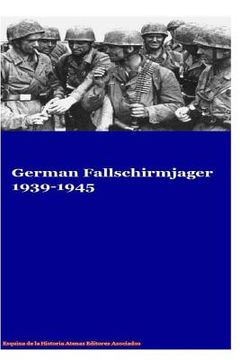Synopsis "German Fallschirmjager 1939-1945 (in English)"
With the outbreak of World War I in August 1914 the importance of aerial warfare was initially overlooked. The general staffs of the combatant nations considered it a toy of dubious use, and those in the infant air services were looked upon as "backsliders" who had found a way of avoiding "real" action. Speaking as Commander-in-Chief, Aldershot, just one month before the outbreak of war, for example, Sir Douglas Haig, later commander of the British Expeditionary Force, told a military gathering: "I hope none of you gentlemen is so foolish as to think that aeroplanes will be able to be usefully employed for reconnaissance in the air. There is only one way for a commander to get information by reconnaissance and that is by the use of cavalry." The British Royal Flying Corps (RFC) went to war with just 197 pilots. Two weeks later Sefton Brancker, Director General of Military Aeronautics, compiled a list of all those left in the country able to fly, and discovered that only 862 men held the Royal Aero Club's certificate. Of these, just 55 were sufficiently advanced to undertake active service immediately. Such meagre resources were considered no great handicap, however, as each side discounted aerial combat (no aircraft mounted any guns) and thus any losses were expected to be small. By the summer of 1915, there were only 200 pilots undergoing training in Great Britain and so it was assumed that weekend gentlemen aviators would top up the supply. In its wisdom the War Office decreed that "members of the RFC who own their own aeroplanes should be encouraged to bring them to the Central Flying School when they undergo their training". In addition, before RFC acceptance all the candidates had to obtain the necessary Aero Club certificate of competence, and had to pay the 75 fee. Entry qualifications to the RFC were eccentric: individuals were asked if they could ride a horse, a motorcycle or sail a boat. Then, after picking out strands of differently coloured wools, individuals were pronounced medically fit to fly.

